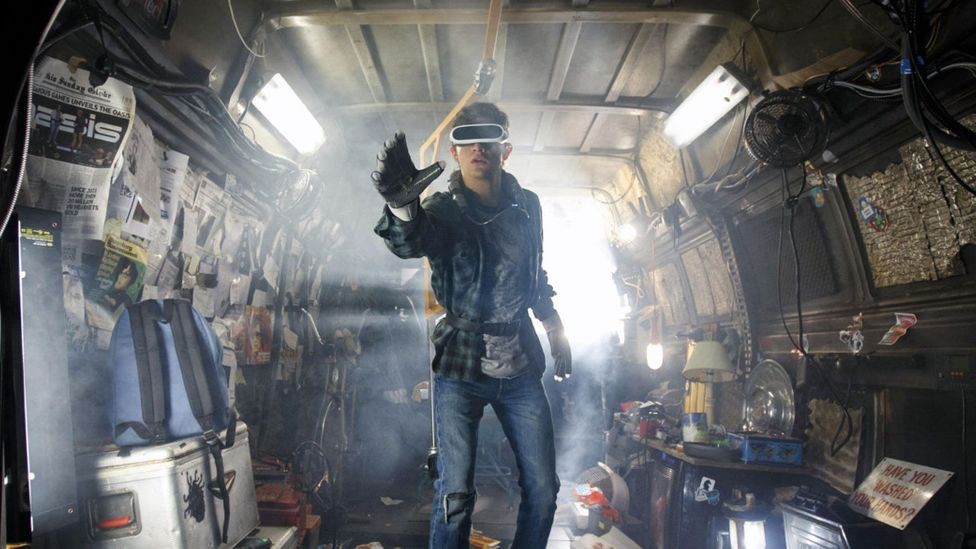
What is the metaverse? It's a new word that seems to have multiple meanings, depending on whom you talk to. So it's difficult to pin down an exact definition. But in general, it describes a predicted new phase for the internet.
So what will this new internet look like, how close are we to realising it, and how will this affect art and design? In this article, we’ll reveal everything you need to know about the coming metaverse.
What is the metaverse?
While the current web is largely based on text, images and video, the next phase of the web, aka the metaverse, is expected to be primarily based on 3D virtual spaces linking together in a perceived virtual universe.
In other words, interacting in the metaverse will feel much more real and immediate than using today’s internet.
A Zoom meeting in 2021, for example, is a clunky and stilted affair. When the metaverse is in full effect, though, we’ll be able to put on VR headsets and see each other in 3D, sitting around a virtual table. An example of this is Meta's Horizon Worlds, a virtual reality persistent social space – though it has some teething problems – Meta's game design has issues. It’ll feel much more like we’re actually in the same room together, and that will make it much easier to relax and communicate more naturally.
And it’s not just meetings. As VR tech becomes more advanced and useable, more and more activity will be replicated in virtual form within the metaverse. We might, for example visit a bank, an art gallery or a cinema, browse items in a virtual store, or meet each other for a game of tennis, all within virtual reality spaces connected by the metaverse.
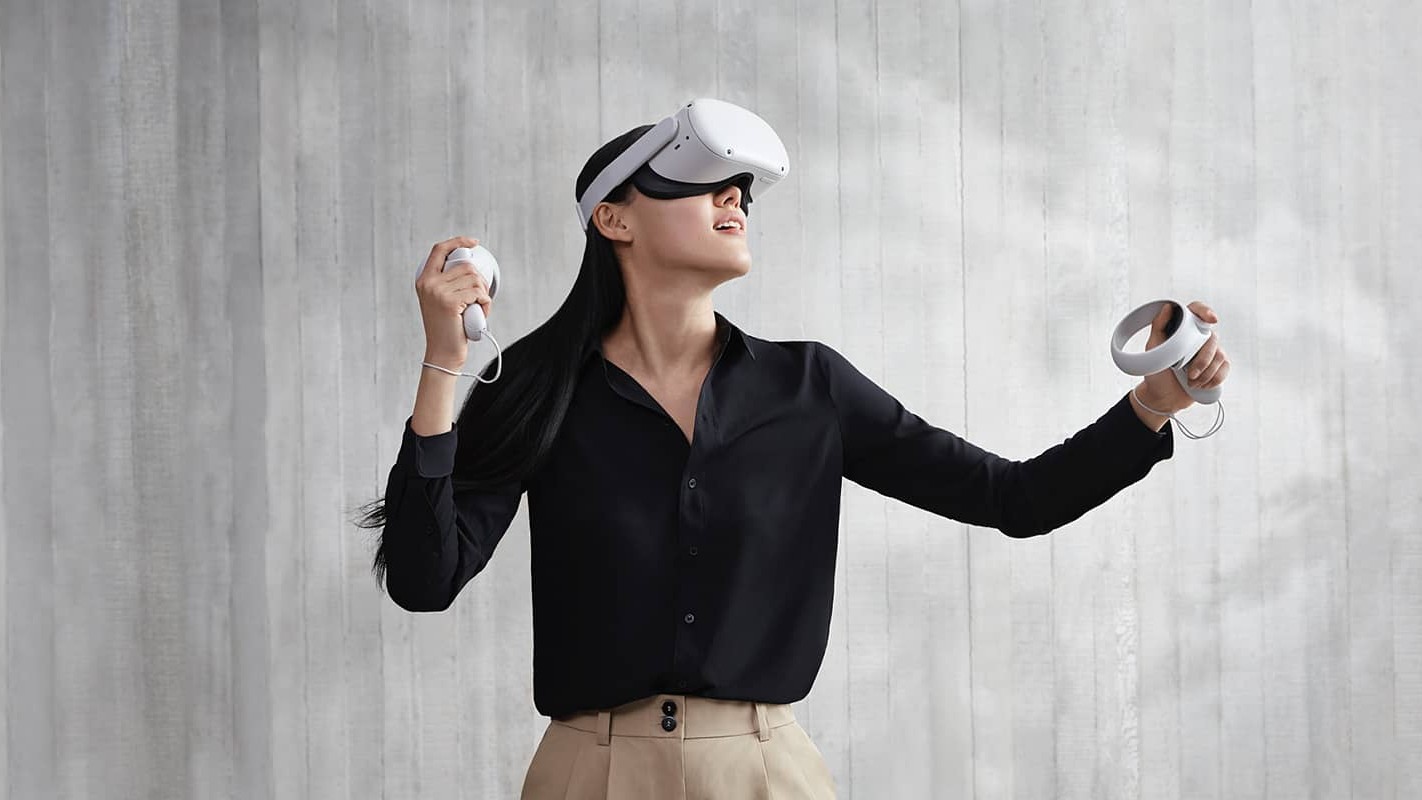
This use of ‘metaverse’ first appeared in fiction in Neal Stephenson’s 1992 novel Snow Crash, where people interact as avatars within a high-definition virtual environment projected onto special goggles.
Daily design news, reviews, how-tos and more, as picked by the editors.
A similar concept was used in the 2018 movie Ready Player One, based on the 2011 book Ernest Cline. It imagines a post-apocalyptic wasteland in which people spend most of their days wearing VR headsets and inhabiting a vast virtual-reality world called OASIS.
It might all far-fetched... but so would today’s internet have been to someone in the 1970s. And the idea that in future we’ll able to meet and do everyday things together in realistic-feeling virtual environments is one that’s exciting a lot of tech companies right now.
After all, during the current pandemic, anyone involved in videoconferencing has seen their stock rocket. In anticipation of the next one, anyone involved in developing the metaverse is expecting the same.
Is the metaverse real?
In practical terms, the metaverse doesn’t exist right now. However, what does exist is a number of exciting new technologies, which in theory will gradually join up and form the building blocks of a future metaverse.
The first is, most obviously, virtual reality headsets. If you’ve tried VR headsets in the past, and found them an awful, headache-including experience, you’re not alone. But the best VR headsets around today, like the Oculus Quest 2 and Oculus Rift S, offer vastly better quality and usability than models from only a few years back.
Secondly, VR headsets are no longer just for plugging into games. New and evolving internet technologies, such as Mozilla's WebVR and Firefox Reality, allow people wearing them to connect together in meaningful ways.

Then there’s blockchain technology, which is allowing the creation of multiple digital currencies, known as cryptocurrencies. It’s widely predicted that these cryptocurrencies will become the main way people exchange goods and services within the metaverse, which means this virtual world can become truly separate from national borders and government interference.
(Of course, governments may think different and put obstacles in their way, but that’s not happening yet. Indeed, this month El Salvador became the first country to make Bitcoin legal tender).
Another development is the recent rise of new ‘virtual worlds’ such as Decentraland, Cryptovoxels and Sandbox. Like Second Life, which launched in 2003 and by 2013 had one million users, these digital environments allow participants to buy land, create experiences, and interact with each other in as many different ways as they can imagine. In June, the auction house Sotheby’s launched a virtual gallery in Decentraland, and one plot of land sold for $900,000.
Moves towards the metaverse are also taking place within games. Online gaming platforms like Fortnite, Minecraft and Roblox have gone beyond gaming alone, and are becoming vast social platforms in their own right, as well as hosting virtual clubs, concerts and other events.
Commentators have also pointed to developments such as augmented reality and the rise of NFTs (see our what are NFTs explainer) as essential elements of the coming metaverse. In truth, we can’t quite see how those last two fit in, but then perhaps that’s why we’re not visionary tech billionaires ourselves.
Who's involved in the metaverse?
One of the reasons people are taking the metaverse seriously is the amount of attention being poured into it by the world’s biggest tech firms.
In June, for example, Facebook CEO Mark Zuckerberg told employees that as well as developing the hardware to access the metaverse (Facebook has owned Oculus since 2014), he’s committed to building a series of connected apps to help bring the metaverse to life.
These include Horizon Workrooms, a working app that allows people wearing an Oculus Quest 2 headset to enter a 3D meeting room and interact with spatial sound and hand tracking. Currently in beta, it uses cartoon avatars rather than real faces, but it's a start at least.
Another company staking its future on the metaverse is Epic Games, the creator of Fortnite. In April they announced a $1 billion investment to build a “long-term vision of the Metaverse”, and Sony Group Corporation contributed an additional $200 million to that pot. Microsoft’s Satya Nadella has also talked about the company’s interest in building the “enterprise metaverse”.
In short, if there’s a big tech company that isn’t talking about the metaverse yet, they probably will be soon.
What is the metaverse in gaming?
We can't stress enough that the term 'metaverse' is pretty loose right now, and means a lot of different things in the mouths of different people. And so when people talk about the metaverse in the context of gaming, it's not so much about VR. It's more about the expansion of massive multiplayer online gaming platforms into complex, rich, virtual worlds where people don’t just play games but chat, socialise, go to virtual clubs, attend virtual concerts, and more.
Fortnite has led the field here, introducing a Party Royale mode where players stop fighting and start socialising. That’s included, for example, live screenings of Christopher Nolan films and performances by big music artists such as Ariande Grande, Travis Scott, Diplo, Marshmello and Deadmau5, for people’s avatars to gather and watch together within Fortnite.

Fortnite hopes to make such events an integral part of the global music scene, and has built a state-of-the-art digital stage in the real world for performers, with robocams and a giant LED wall. The company has also introduced a Creative mode, which lets you build your own island within Fortnite, and invite other players to socialise there.
As Matthew Weissinger, the vice president of marketing at Epic, said in a recent court case: “It’s more than a game. We’re building this thing called the metaverse: a social place.” Building being the important word here: no-one’s actually created the metaverse yet. But Fortnite believes it’s well on the way. As does another gaming company, Robox...
What is metaverse Roblox?
You may not have heard of Roblox, but it went public this February at a valuation of $45 billion, so the tech world is clearly taking it seriously.
Launched in 2006, Roblox allows you to create your own games, and then play them against other users. It's been a huge hit with children, although as of 2021 Q2, nearly half of Roblox's players are now over 13.
Because of this focus on user-generated content, it’s been dubbed the YouTube of the gaming world. But there’s also a strong social networking element to Roblox that’s been baked in since the start.
Roblox is home to a booming virtual economy, with players using its virtual currency, Robux, to buy hats, bags, weapons and other digital items. A total of $652 million was spent in the first quarter of the year alone.
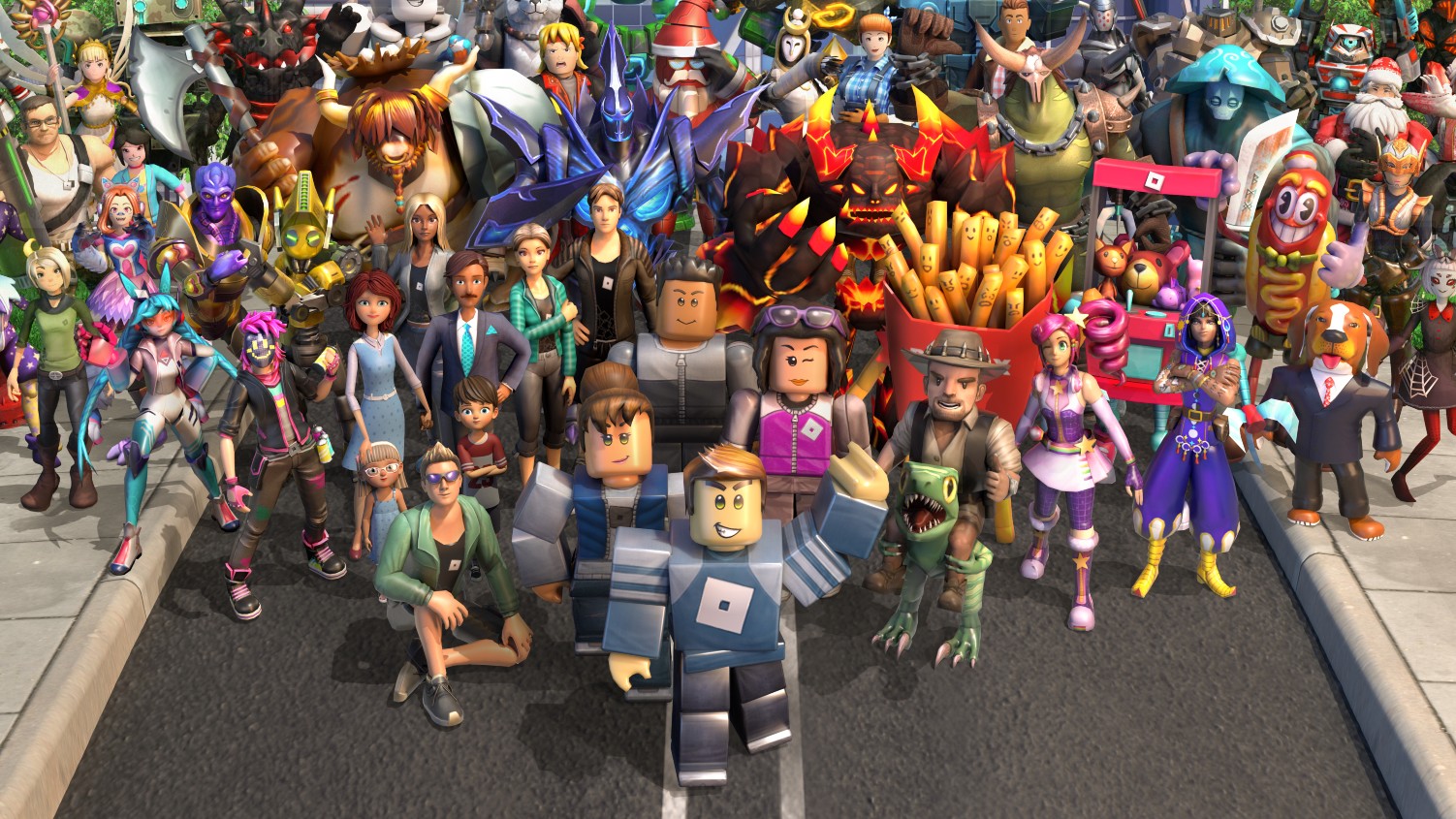
Roblox is also bringing interactive new elements to the platform such as music events. For example, Ava Max launched her album Heaven & Hell on Roblox last September, and more than two million users signed up to attend.
Again, this is still some way from the ultimate vision tech leaders like Mark Zuckerberg have for the metaverse. But it’s certainly a step or two in that direction, and one that Roblox is committed to.
“Fostering a rich community built on shared experiences is central to [our] vision and a driving force for Roblox’s path forward,” wrote chief product officer Manuel Bronstein in a blog post this month. “As we build an engaging and civil community where people form real connections, we are envisioning the future of communication both in the metaverse and beyond.”
How will the metaverse affect the art and design world?
So what does this all mean for creative professionals? It’s difficult to be specific, because precisely where this technology is heading is hard to predict. But imagine what advice you’d give to a creative in the 1980s about how this new thing called the internet is going to affect them, and it’s likely to be a similar thing with the metaverse.
The internet didn’t replace anything totally: physical books are still with us, as are cinemas, theatres, DVDs and even vinyl records. Plus, for many analogue-oriented creatives, the internet has proved a useful way of finding your audience and meeting that demand. Others, meanwhile, decided to transition their analogue skills to digital ones, and have benefited from the internet more directly. And, well, we're expecting much the same dynamic with the metaverse.
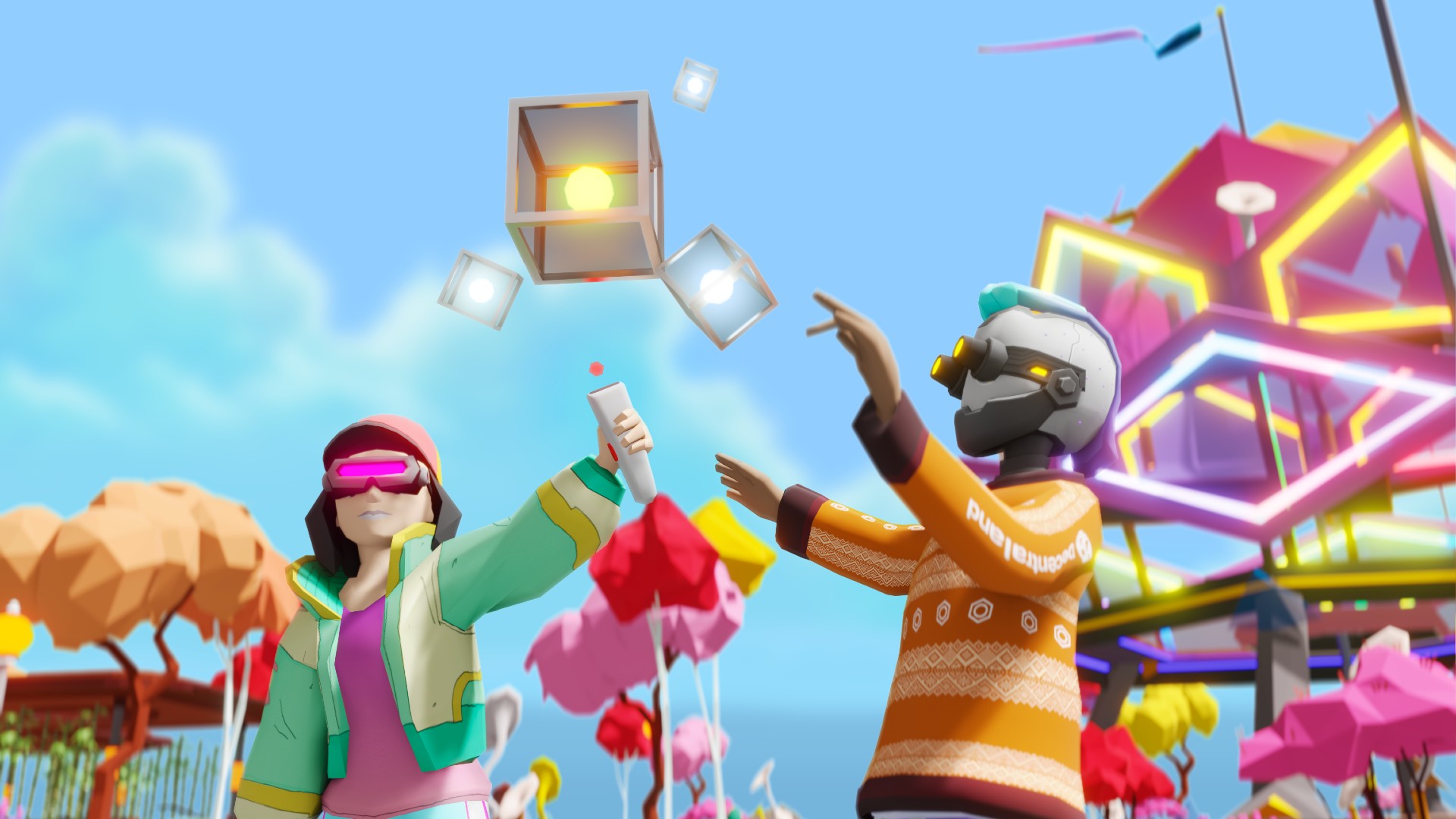
If making screenprints of traditional Japanese calligraphy is your thing, there’s no reason you’ll need to stop. The only thing you might consider is how the metaverse might help you promote yourself. (Might you one day, for example, open a virtual gallery to exhibit your work?)
Alternatively, you might prefer to get on board with the metaverse, and transform your existing skills to work within this exciting new space.
For example, could you harness your skills as a set designer to design virtual sets for music and theatre venues in the metaverse? Maybe you could transition your 3D animation skills into 360 VR animation? Plus UX designers, web designers and web developers who can make the elements of the metaverse operate and interact smoothly will inevitably be in high demand too.
How will the metaverse affect our everyday lives?
In general, once the metaverse arrives, we’re hoping it will help us all communicate with each other better. The internet itself has certainly improve the speed, efficiency and quantity of our communications, but it hasn’t necessarily improved their quality.
Our text-based messages lack the nuance and behaviour cues of face-to-face interaction. And video conferencing only gets us halfway to feeling like we’re really in a room with each other.
The promise of the metaverse is to properly reproduce that experience. If that can be achieved in a smooth and naturally feeling way, then we really can start working from home in a way that’s almost indistinguishable from commuting to the office.
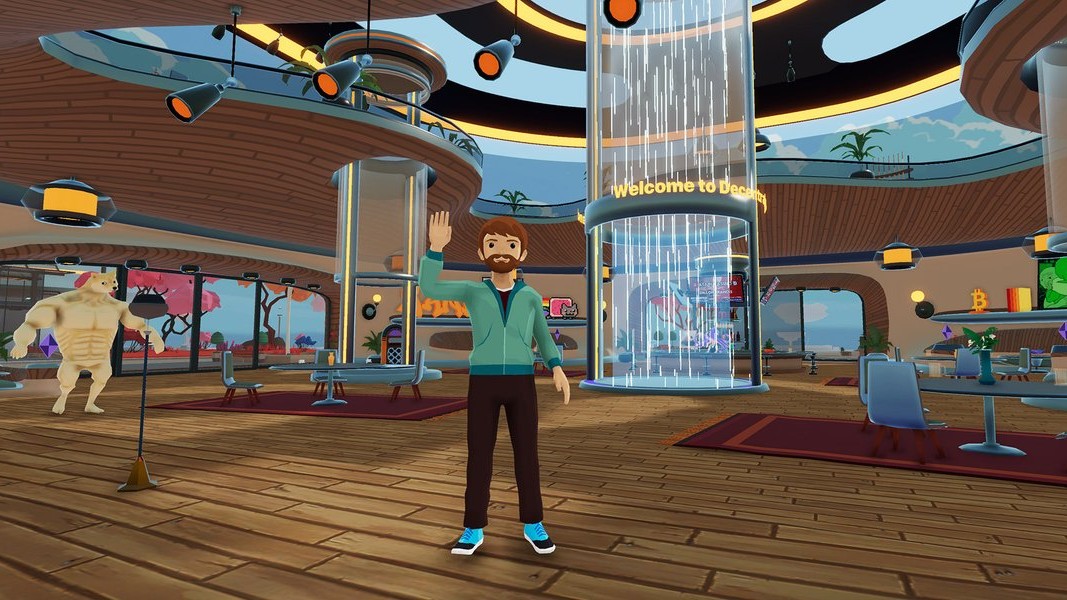
We’ll also be able to enjoy such disparate experience as visiting an art gallery, wandering around the shops or attending a lecture in a more meaningful way than just looking at a flat screen. Not mention developing closer and deeper relationships with people in other cities and other countries... without having to constantly travel.
That will have benefits for the environment, and be handy next time we have to lock down in the event of a pandemic or other natural disaster. It may also help to boost understanding and empathy across national borders and disparate cultures. Perhaps most importantly, it should give us more time to spend with our families, close friends and just having quiet time to ourselves.
Will the metaverse actually happen?
All of this is predicated, of course, on the metaverse actually happening. For all the reasons we’ve given, we truly hope it does. However, the future is maddenly hard to predict: who saw the 2020s turning out the way they have so far? And there are numerous potential obstacles standing in the way of the metaverse.
The first, and most obvious, is technological. For the majority of the world’s population to continually access live, high-definition video, in full 360 degrees and at the kind of high resolutions needed for everything to feel natural, will take a tremendous amount of computing power.
Yes, the speed of microprocessors has been increasing exponentially for many decades. But in recent years as the industry has reached the quantum level of engineering, that’s slowed to a crawl. Consider how much broadband speeds will have to increase too, and the technical challenge is not to be taken for granted.
Even if the technology is there, the idea that we’ll have one big metaverse, in which people can move around freely, implies a level of co-operation that’s currently lacking on the present-day internet. Indeed, most big tech companies spend most of their time constructing ‘walled gardens’ around their services that make moving from one to the other a total pain. Try finding a post you saw on Facebook through Google, and you’ll see exactly what we mean.
The idea that all this natural rivalry is going to disappear seems fanciful. And so what people refer to as ‘the’ metaverse it’s more likely to actually be a series of competing metaverses vying for your attention.
Even if companies do decide to co-operate, there’s no guarantee that governments will let them. Like every stage of the internet’s development, a totally unregulated metaverse could become a breeding ground for both challenges to authoritarian governments, and terrorist groups trying to bring down democratic ones.
Governments around the world are currently playing catchup with the unforeseen dangers of the web and social media, in a process that looks very much like trying to put the genie back in the box. They’re unlikely to make the same mistake next time around.
Fundamentally, though, these points could all be moot, because ordinary people living outside the tech industry just might not want to mess around with VR headsets.
Think back 10 years to when the TV and movie industry thought 3D would be the way forward. Every home would have a 3D TV, and families would watch 3D content through special polarised light glasses. It'd be normal to walk into a bar, put on the same glasses, and watch live sports together in 3D. It was an enticing vision, but it never took off, because people simply don’t like wearing cumbersome glasses when they don’t need to.
It’s a simple point that anyone investing a billion or so in metaverse technology would do well to bear in mind.
Read more:

Tom May is an award-winning journalist specialising in art, design, photography and technology. His latest book, The 50 Greatest Designers (Arcturus Publishing), was published this June. He's also author of Great TED Talks: Creativity (Pavilion Books). Tom was previously editor of Professional Photography magazine, associate editor at Creative Bloq, and deputy editor at net magazine.
